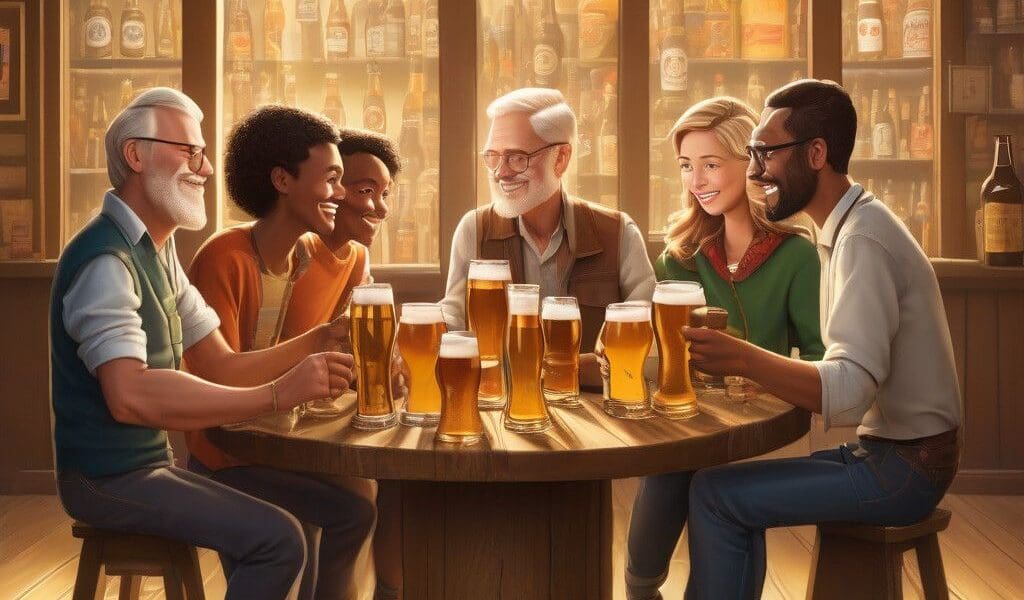Recent research by AIport and Turing Post has unveiled fascinating insights into how various generative AI models perceive and represent different generational groups. This study, which analyzed over 1,200 AI-generated images across four popular models—Stable Diffusion, Midjourney, YandexART, and ERNIE-ViLG—highlights the stereotypes and surprising elements surrounding Baby Boomers, Generation X, Millennials, and Generation Z.
The findings reveal how AI interprets generational identities through visual representation. Notably, the portrayals of Baby Boomers vary significantly between models. For instance, Midjourney presents nearly 80% of Boomers as somber, often depicting them in reflective poses, bundled up, and staring into the distance. In contrast, ERNIE-ViLG provides a more cheerful image, with over 90% of Boomers appearing smiling. This disparity underscores the impact of training datasets on the output from these AI models.
Baby Boomers, traditionally viewed as nostalgic and conservative, are often associated with a certain solemnity in their depictions. On the other hand, younger generations, particularly Millennials and Generation Z, are typically illustrated as vibrant, diverse, and dynamic. This aligns with the cultural characteristics of younger populations in countries like India, where globalization fosters a spirit of inclusivity and representation among the youth.
Millennials, commonly pigeonholed as career-hoppers or avocado toast lovers, experience a more nuanced representation in the study. The research suggests that AI models capture a broader spectrum of identities and experiences within this group, acknowledging the intersectionality of cultural influences. This points to a significant convergence between the experiences of Indian Millennials and their global counterparts.
One of the study’s most striking findings was the frequent appearance of beer across all generational depictions. From Baby Boomers to Generation Z, the inclusion of beer suggests a surprising, cross-generational link, highlighting that certain social habits transcend age and cultural expectations. Although this portrayal may not align with traditional Indian drinking patterns, it reflects a broader societal connection through shared experiences.
Methodologically, the researchers employed neutral prompts such as “a Millennial at work” or “a Boomer relaxing” to eliminate bias in AI outputs. This objective approach aimed to reveal societal expectations and their representation in AI-generated images. The stark differences, especially in the portrayal of Baby Boomers, underscore how regional and cultural contexts shape AI interpretations.
Lisa Sparks, Ph.D., Founding Dean of the School of Communication at Chapman University, emphasized the significance of these findings. “These images offer a new lens through which to explore how AI interprets generational identity. For an Indian audience, this opens discussions about how global AI models understand cultural identity and the extent to which their interpretations reflect our values or biases.”
The analysis of these four globally recognized AI models exposes diverse aesthetic and cultural nuances in generational portrayals. Each model offers a unique perspective, contributing to a comprehensive understanding of how different regions interpret generational identities through the digital lens.
AI-generated images serve not only as reflections of generational differences but also as a means to examine societal norms and cultural perceptions. While enduring stereotypes still persist—such as reflective Boomers contrasted with vibrant Gen Z—the consistent depiction of beer across all generational images emphasizes a shared cultural motif in AI’s visual storytelling.
In today’s digital landscape, businesses and marketers must recognize the implications of AI’s portrayal of generations. Understanding how these models function can help brands tailor their marketing strategies and communication messages more effectively. By leveraging the insights drawn from AI representation, marketers can foster a cultural resonance with their target audiences.
As the conversation around generational identity continues in both academic and marketing spheres, the challenge lies in ensuring that interpretations are comprehensive and informed. Engaging with AI technologies becomes crucial to reflecting the true diversity and vibrancy of generational experiences. With brands increasingly relying on AI for creative output, a commitment to inclusivity and cultural sensitivity is paramount to avoid reinforcing stereotypes and biases.
In summary, the portrayal of generations through AI-generated images offers a thought-provoking examination of how technology intersects with cultural identity. The surprising presence of common elements, such as beer, alongside the distinctive attributes of each generation, reveals deeper social connections that invite further exploration and understanding.
AI technology and its role in shaping perceptions of age and identity present both opportunities and challenges. Organizations must be aware of how their marketing efforts engage with these representations, ensuring that they reflect a broad spectrum of experiences, especially in culturally diverse markets.












